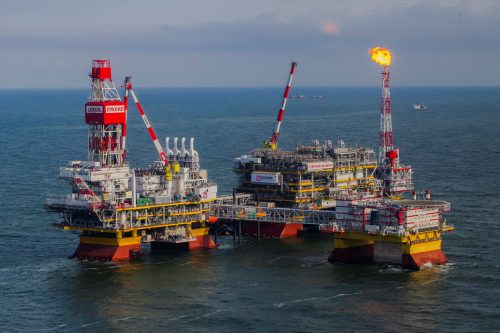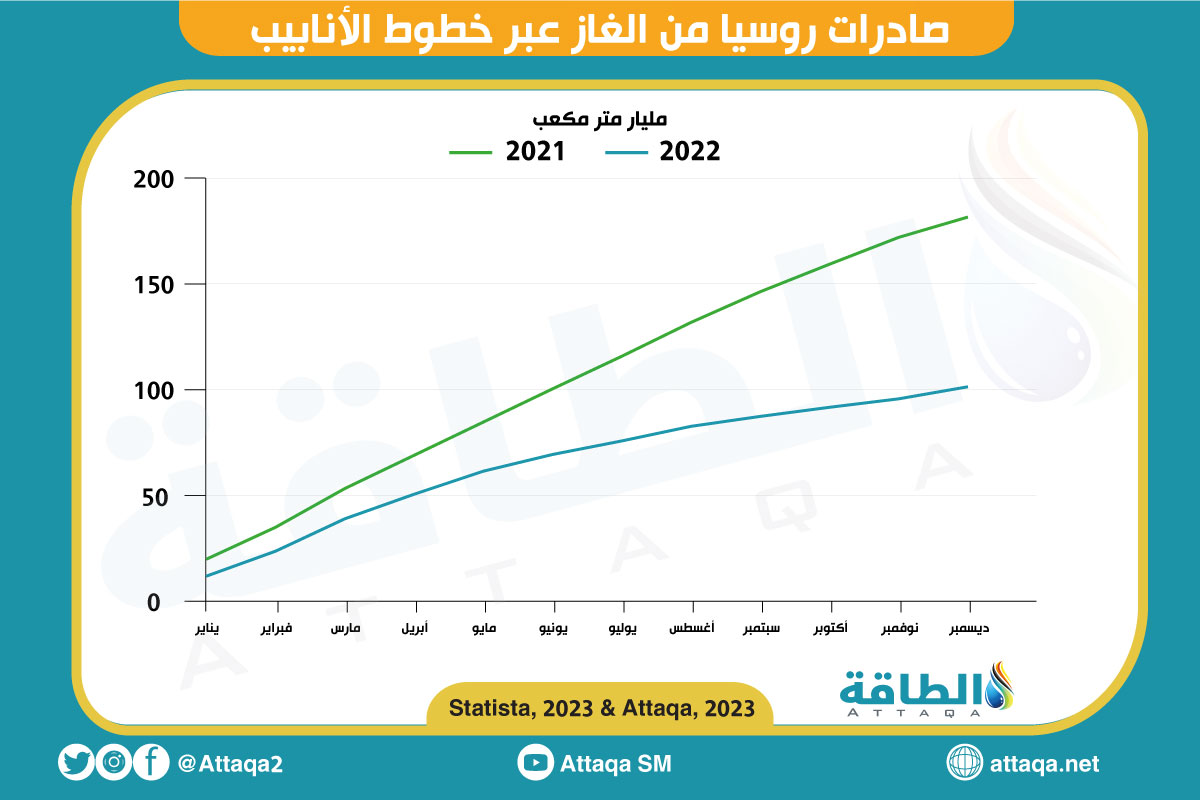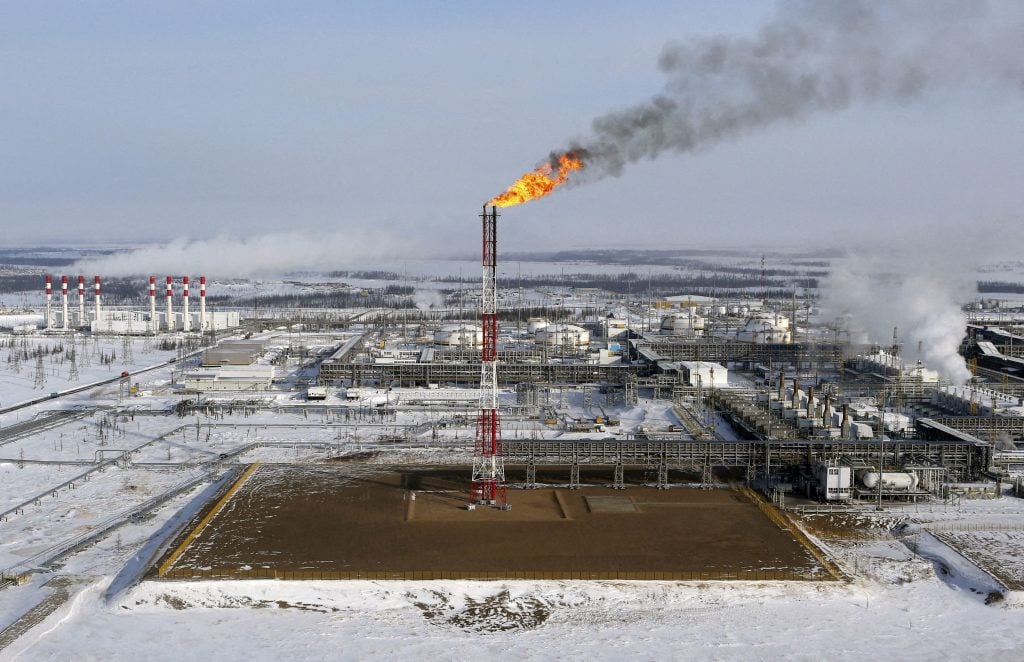It is no longer difficult for Russian oil exports, which have been affected by Western sanctions, to reach friendly countries, in the wake of Moscow’s circumvention of Western restrictions that restrict the Russian energy industry.
Western governments clamped down on Russian energy supplies; With the aim of drying up the sources of its revenues, which Moscow relies on to rotate the war machine in Ukraine.
In this context, all Russian oil exports – which were affected by Western sanctions imposed on them, against the backdrop of the Ukrainian war – changed their path to friendly countries, as Russian Energy Minister Nikolai Shulginov announced today, Tuesday, March 28 (2023), in statements reported by Reuters. .
The West imposed wide-ranging sanctions on Moscow, including an embargo on Russian seaborne oil exports, following its invasion of its Ukrainian neighbor on February 24 (2022), according to information collected by the specialized energy platform.
Redirecting Russian oil exports
“I can say now that we succeeded in completely redirecting Russian oil exports, which were affected by the Western embargo, but there was no drop in sales,” Shulginov said, in remarks he made at an energy forum.
The chart below shows that I prepared it Energy Research Unit – Russian oil export revenues:
Shulginov confirmed that Russian oil and gas production was expected to decline in the current year (2023), while Moscow is under enormous pressure due to Western restrictions, and the lack of European buyers for its two vital commodities.
For his part, the CEO of the Russian state company Gazprom Neft, Alexander Dyukov, said that the year 2023 will be more difficult than his predecessor (2022), adding that the pressures resulting from Western sanctions will be exacerbated, according to statements he made at the Energy Forum.
India is the largest buyer
Shulginov said that Russia is working to re-change the course of oil exports and exports of petroleum derivatives to Asia, Africa, Latin America and the Middle East from its traditional markets in Europe.
India ranks as the largest buyer of Russian benchmark Urals crude in March (2023).
According to forecasts, India will account for about 50% of all seaborne Urals crude exports in March (2023), while China will rank second.
For his part, Russian Deputy Prime Minister Alexander Novak said that Russian oil exports to India jumped 22 times in 2022, but he did not specify the volume of those sales.

energy revenue
Novak explained that energy revenues accounted for 42% of the size of the Russian federal budget in 2022, up 36% from the previous year (2201).
He pointed out that the Russian energy industry is sustainable, despite the difficult challenges posed by Western sanctions.
Novak said that Russia needs to focus on promoting energy exports to so-called “friendly countries,” adding that Moscow will continue to develop the tools of influence necessary to support its trade.
Decreased gas production
Russia witnessed a decline in natural gas production by 9.5% on an annual basis, to 119.4 billion cubic meters, in January and February (2023), according to the Russian newspaper “Vedmosti” today, Tuesday, March 28 (2023).
Russian gas production is on a downward path, contracting by about 12% in 2022; As a result of the repercussions of the Ukrainian war, which Moscow calls a “special operation,” in addition to the intensive moves of European countries to diversify energy sources, away from Russia, according to what the newspaper quoted informed sources.
Russian gas production also fell by 8.7% in February (2023), to 56.7 billion cubic meters, while gas production in January (2023) fell by 9.7%, to 62.7 billion cubic meters.
One of the sources said that the state company Gazprom has contributed the largest share in this decline, according to what was reported by “Vedmosti”.
Production cuts continue
On March 21 (2023), Alexander Novak said that Russia will continue to cut its oil production by 500,000 barrels per day, until the end of June (2023), as reported by CNN.
The following graph – prepared by the specialized energy platform – shows Russia’s gas exports through pipelines:

Novak said, “Now Russia is close to achieving the target reduction level, and we will reach it in the coming days,” referring to his announcement in February (2023), that his country would reduce its daily oil production by 500,000 barrels per day, starting in March (March 2023). 2023).
Novak added, “According to the current market situation, the decision to cut production voluntarily by 500,000 barrels per day, until June (2023), will be inclusive.”
In a separate statement, Novak indicated that the global oil market is under unprecedented pressure, citing the Western energy embargo imposed on Moscow, and the dangerous attempts to impose a ceiling on Russian oil prices, as he described it.
The decision to reduce Russian oil production adds to a similar agreement by OPEC + (an alliance that includes the Organization of the Petroleum Exporting Countries “OPEC” along with allied countries) to reduce supply.
In October (2022), OPEC + agreed to a sharp production cut of two million barrels per day, effective from November 2022 until the end of 2023, despite repeated calls for increased production by primary consumers.
related topics..
Also read..

Leave a Reply